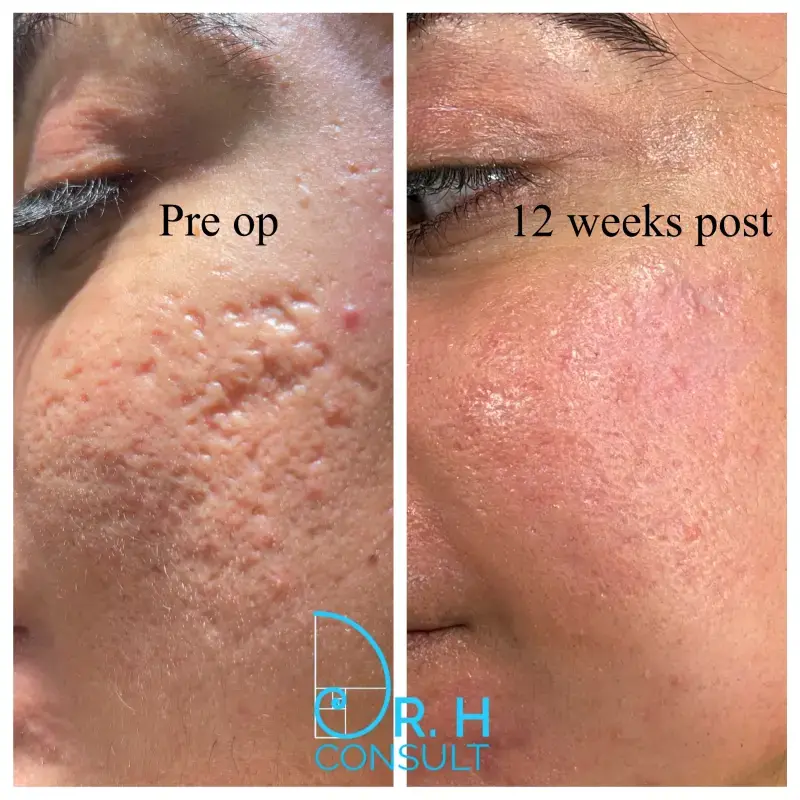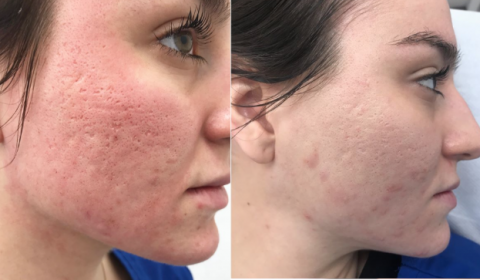Checking Out Skin Problems: Treating and determining Acne Scars for Healthier Skin
Acne scars represent a considerable worry for people looking for to keep healthy skin, as they can impact both look and self-confidence. Understanding the various kinds of marks, from atrophic to hypertrophic, is vital for identifying proper therapy options. While professional treatments like chemical peels and microneedling can be effective, the importance of individualized care plans can not be overstated. Moreover, preventative steps play an essential duty in minimizing future scarring. As we discover these aspects, one should consider exactly how the right technique can bring about transformative outcomes.
Recognizing Acne Marks

The body's natural healing procedure can lead to either atrophic scars, which show up as anxieties in the skin, or hypertrophic scars, which are elevated and arise from overproduction of collagen. In addition, the psychological toll of acne marks ought to not be ignored; several individuals report sensations of embarrassment, anxiousness, and reduced self-esteem. This psychological problem can affect social communications and general lifestyle.
Addressing acne marks needs an extensive understanding of their formation and influence. Recognition of the potential for long-term repercussions related to unattended marks can motivate individuals to look for suitable treatments. Early treatment and reliable management techniques can significantly boost skin appearance and improve psychological strength, stressing the relevance of understanding the intricacies surrounding acne scars.
Kinds of Acne Scars
Acne scars can be classified into distinctive kinds, each showing unique attributes and requiring details therapy approaches. skin rejuvenation treatments. The primary kinds of acne marks consist of atrophic, hypertrophic, and keloid scars

Hypertrophic marks, in contrast, are increased over the skin level and are the result of too much collagen production during the recovery procedure. They usually stay within the boundaries of the original acne sore. Keloid marks are comparable but prolong past the initial injury site, creating larger, elevated locations that can be itchy or unpleasant.
Comprehending these kinds of marks is important for choosing proper therapy options. Various marks might react better to particular therapies, such as laser treatments, fillers, or surgical treatments, highlighting the relevance of a customized approach to acne scar management.
Identifying Your Marks
When assessing the look of your skin, it is essential to accurately recognize the sort of marks existing, as this will educate the most efficient therapy technique. Acne marks usually drop into 2 classifications: hypertrophic and atrophic marks. Atrophic scars, which are one of the most common, look like clinical depressions or imprints on the skin. These can further be categorized right into ice-pick marks, boxcar scars, and rolling scars, each displaying distinctive attributes and requiring different techniques for analysis.
Hypertrophic marks, on the various other hand, are raised and occur due to extreme collagen production during the healing procedure. Identifying the specific features of your scars-- such as texture, deepness, and size-- is necessary for proper recognition (acne scars treatment). In addition, think about the circulation of scars across your skin, as this can indicate the extent and period of the acne condition
Engaging with a dermatologist can provide beneficial understandings right into the nature of your scars, aiding in the distinction in between different types. An extensive understanding of your scars will ultimately More Help bring about an extra tailored and effective therapy strategy, guaranteeing a clearer and healthier skin tone.
Treatment Alternatives Offered
Determining the specific kind of acne scars existing on your skin lays the foundation for checking out effective treatment options. Usual sorts of acne scars consist of atrophic (depressed), hypertrophic (elevated), and post-inflammatory erythema.
For atrophic marks, options such as chemical peels, microneedling, and laser resurfacing are commonly used. Chemical peels off make use of acids to eliminate the outer here are the findings layer of skin, promoting new cell development.
Hypertrophic marks can be treated with corticosteroid shots to flatten the scar or laser treatment to lower redness and enhance appearance. Silicone gel sheets and pressure dressings may likewise help in handling raised scars.
Additionally, dermal fillers can briefly fill in depressions from atrophic scars, while surgical excision may be appropriate for extreme instances. Each therapy choice has its considerations and advantages, making it important to talk to a skin doctor. They can provide individualized referrals based upon the type and intensity of your scars, in addition to your skin kind and general health and wellness.
Tips for Avoidance
Effective avoidance methods can substantially reduce the probability of creating acne marks. Making use of non-comedogenic items assists stop clogged pores, which can exacerbate click to find out more acne.
Staying clear of need to pick or stand out acne sores is essential, as this can result in much deeper skin damage and boost the danger of scarring. Instead, consider using a chilly compress or non-prescription treatments to reduce swelling and soreness.
Sunlight security is an additional important aspect of prevention; ultraviolet (UV) rays can darken scars and impede the healing procedure. Using a broad-spectrum sun block with at the very least SPF 30 daily can safeguard the skin and promote also recovery.
Finally, preserving a balanced diet plan abundant in anti-oxidants, vitamins, and minerals sustains skin wellness and healing. Staying hydrated and taking care of anxiety degrees can additionally play a significant duty in reducing acne flare-ups. By applying these strategies, individuals can dramatically minimize their chances of developing acne marks.
Final Thought
In verdict, understanding and determining acne marks is essential for efficient treatment and accomplishing much healthier skin. Numerous kinds of acne marks, including hypertrophic and atrophic scars, necessitate details treatments tailored to private needs.
The body's all-natural healing procedure can result in either atrophic scars, which appear as depressions in the skin, or hypertrophic scars, which are increased and result from overflow of collagen. They are more divided right into 3 subtypes: ice choice scars, boxcar scars, and rolling scars. Acne marks usually drop right into two classifications: hypertrophic and atrophic marks. These can further be categorized right into ice-pick scars, boxcar scars, and rolling scars, each displaying distinctive attributes and needing different techniques for analysis.
Numerous kinds of acne marks, including atrophic and hypertrophic scars, demand particular treatments tailored to private requirements.